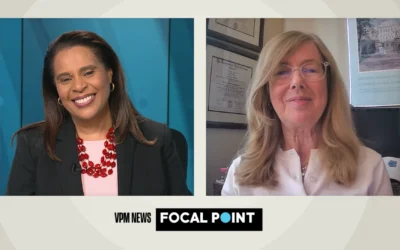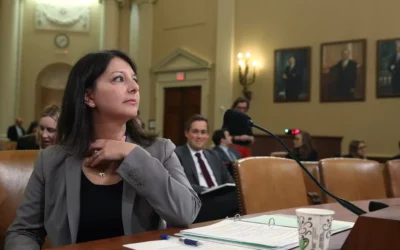WCH In the News
Council hears about possible community land trust in city
Original article courtesy of the Rocky Mount Telegram.
by WILLIAM F. WEST Staff Writer ,
Updated Thurs April 29, 2021
![]()
A group of UNC-Chapel Hill students earlier this week told the Rocky Mount City Council specifics of their analysis regarding how a possible community land trust could best serve city residents.
During Monday afternoon’s council regular meeting, the students emphasized their recommendation calls for the City of Rocky Mount to support a community land trust to help create accessible and affordable housing and increase homeownership rates locally.
The students pointed out there is a gap in homeownership rates, with the rates in Rocky Mount being more than 50 percent and the rates statewide being more than 65 percent.
Generally, a community land trust is a nonprofit organization that owns and manages land homes are built on, with an individual allowed to purchase a home on one of those properties. Subsequent structural improvements to the home would belong to that respective homeowner.
So land ownership remains completely separate from homeownership.
Specifically, the students told the council their plan would be for the community land trust to build out over a three-year period and their plan would involve 15 properties mostly centered around Goldleaf Street.
The students said the 15 properties are primarily located within a three-block range, with a few outliers roughly a couple of minutes away by vehicle.
Of the 15 properties, they presently are either the scenes of still-standing but unoccupied structures or are vacant lots.
The 15 properties presently belong to the Durham-based Self-Help Credit Union. Under the students’ plan, there would be a negotiation for the properties to be transferred after the community land trust is established.
The students said they recommend the community land trust construct three homes the first year, build and reconstruct five homes the second year and reconstruct seven homes the third year.
The students also made clear they believe their plan allows for a pacing of development by the community land trust and, in turn, allows the community to see the benefits of the community land trust as the nonprofit grows.
Additionally, the students showed they had analyzed the fiscal impact of a community land trust in Rocky Mount. The students said the city would lose tax revenue from the land value of these properties due to the community land trust acquiring them but gain tax revenue from higher property values as a result of renovations and structural improvements.
The students at the same time emphasized that the municipality would see savings because there no longer would be a need to spend taxpayers’ money to maintain these unoccupied properties.
The students also emphasized that neighbors benefit from having occupied and well-maintained homes in their neighborhoods rather than vacant or boarded-up structures.
The students said they began by their financial analysis by computing the current tax revenues on the land and structure of each property using the City of Rocky Mount’s present tax rate of 68.5 cents per $100 of assessed valuation.
The students next established an affordable model home to estimate future property values for what they expect a community land trust property is to look like.
The students made clear they know Rocky Mount is a growing city and know new workers flocking to the area in the coming years would cause land values to increase.
The students said they also looked at the land value growth rates for Wilson and Jacksonville, which are similar to Rocky Mount in size and economic potential.
The students said they then averaged land value growth rates to 41 percent and used that value to run a second scenario that considers the anticipated land value growth in Rocky Mount.
The students said that by researching property values throughout Rocky Mount, they set a three-bedroom, two-bathroom, 1,300-square-foot newly renovated home as an ideal model.
The home fitting such specifications would be a structure already in the 600 block of Myrtle Avenue.
The students next cited a vacant lot in the 400 block of Goldleaf Street proposed to be acquired by the community land trust whose present land value is $3,750 and whose present property value is zero.
According to the students, if the land values remain constant and subsequently increases at the projected 41 percent rate, then the future land value would be $5,288 and the future property value, with the model home in place, would be $75,050.
The students said the overall change in total tax revenue would amount to $488 with constant land values and $478 with increased land values.
The students said they repeated the process across all 15 properties and came up with a projected $5,149 in tax gains per year.
The students said that factoring in a loss to the municipality of $709 in land values, the overall increase in tax revenue for all 15 properties would be $4,440 per year, assuming the land and property values remain constant.
The students said that with the projected 41 percent land value growth rate, they found the municipality nonetheless would gain $4,150 in tax revenue per year.
The students also recommended allowing accessory dwellings — that is, smaller residential units — to be on the properties.
The students said this would, for example, allow for a senior citizen to live in the smaller unit while that senior citizen’s adult child or other relative lives in the main house and can readily provide assistance.
The students spoke via teleconferencing and took turns addressing the council.
The students are Allyson Davenport, Taylor Gosk, Jenna Quistorff, Charlie Chapman and Lucy Sasser.
The students, who are seniors, are being advised by UNC Professor Jeanne Milliken-Bonds, whose expertise is in public policy, impact investment and sustainable finance.
The council has been hearing details from experts about community land trusts.
Other News
Mass Migration: Why are people moving south?
Mass Migration: Why are people moving south?Virginia’s demographics are changing. Jeanne Milliken Bonds, public policy professor at UNC Kenan-Flagler Business School explains the shifts. Home | Publications | Mass Migration: Why are people moving south?...
The EIDC Economic Development Journal – Fall 2023
WCH In the NewsThe EIDC Economic Development Journal - Fall 2023 International Economic Development Council1275 K Street, NW, Suite 300 • Washington, DC 20005 • www.iedconline.orgChair: Jonas Peterson, CEcDPresident & CEO: Nathan OhleEditor: Jenny Murphy.November...
The painful pandemic lessons Mandy Cohen carries to the CDC
The painful pandemic lessons Mandy Cohen carries to the CDC"North Carolina initially failed to prioritize testing for people who were exposed to #COVID19 because of where they live or work." - Jeanne Milliken Bonds, Professor of Social Impact Investing at the...



